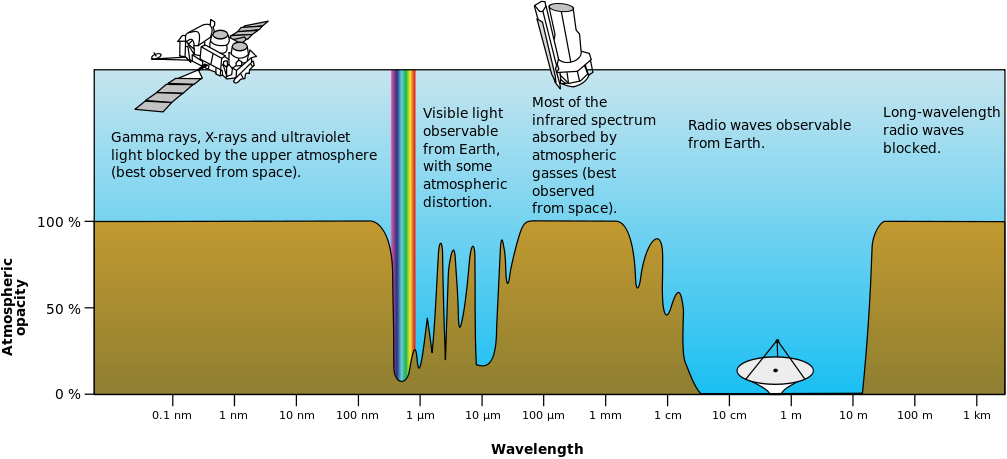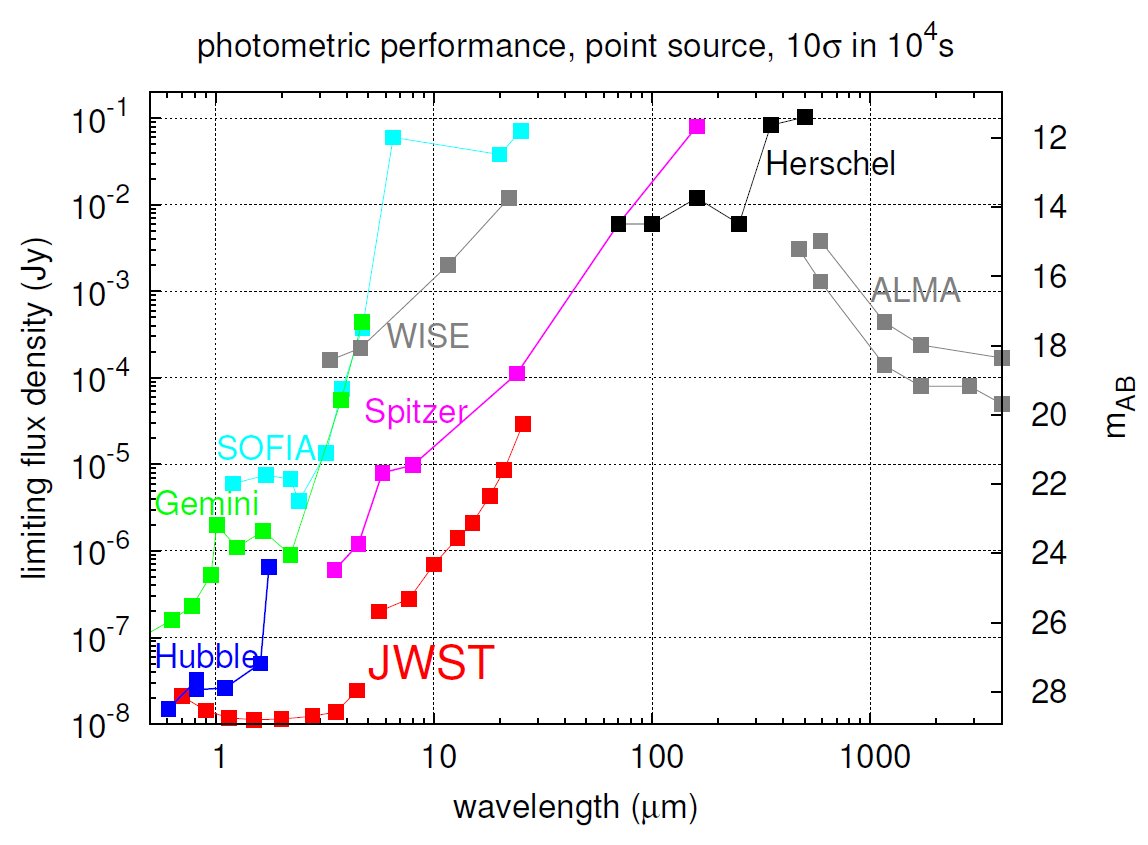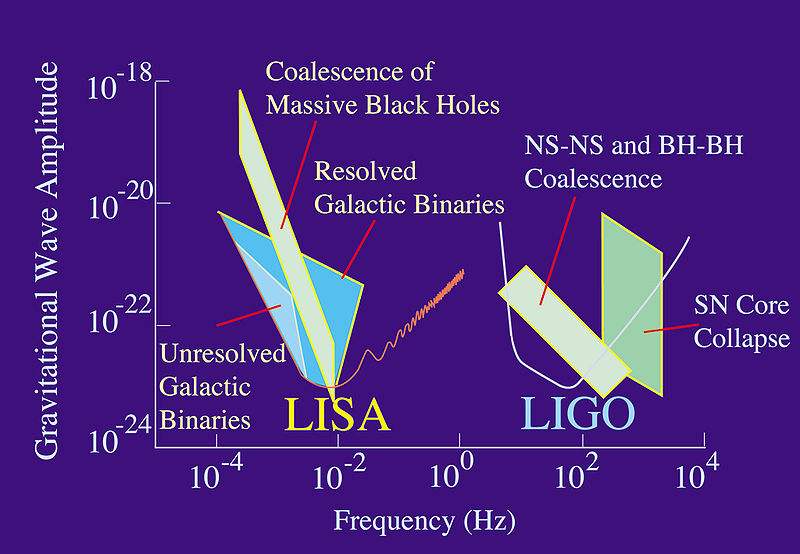Telescopes
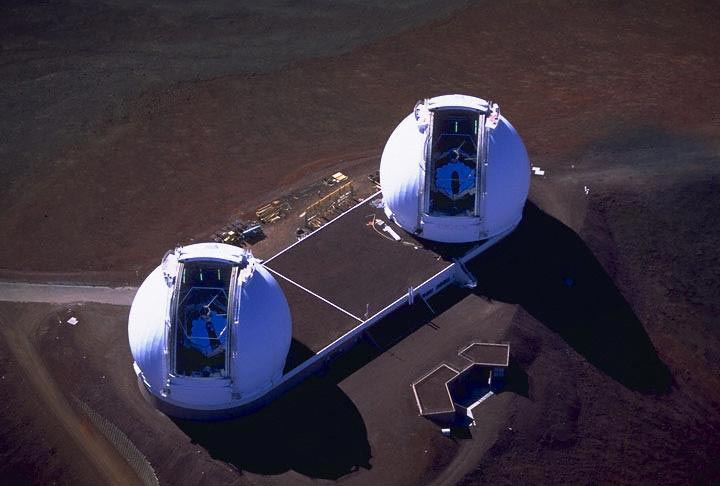 |
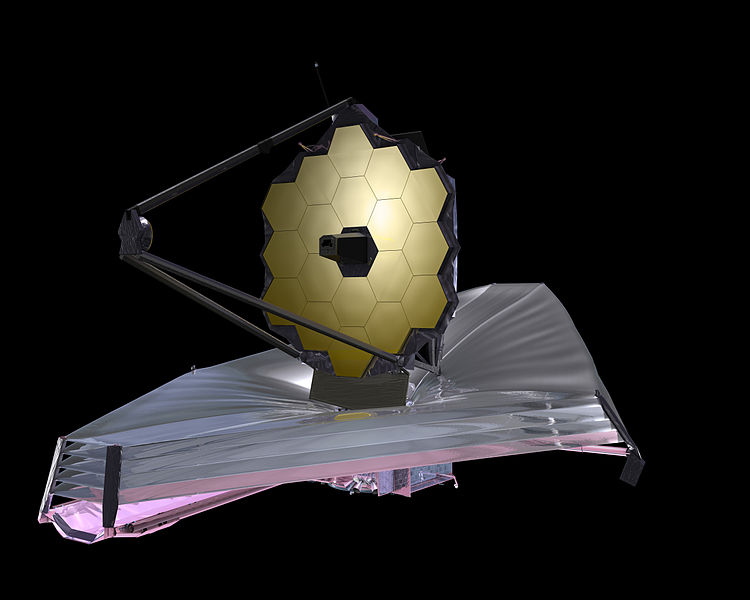 |
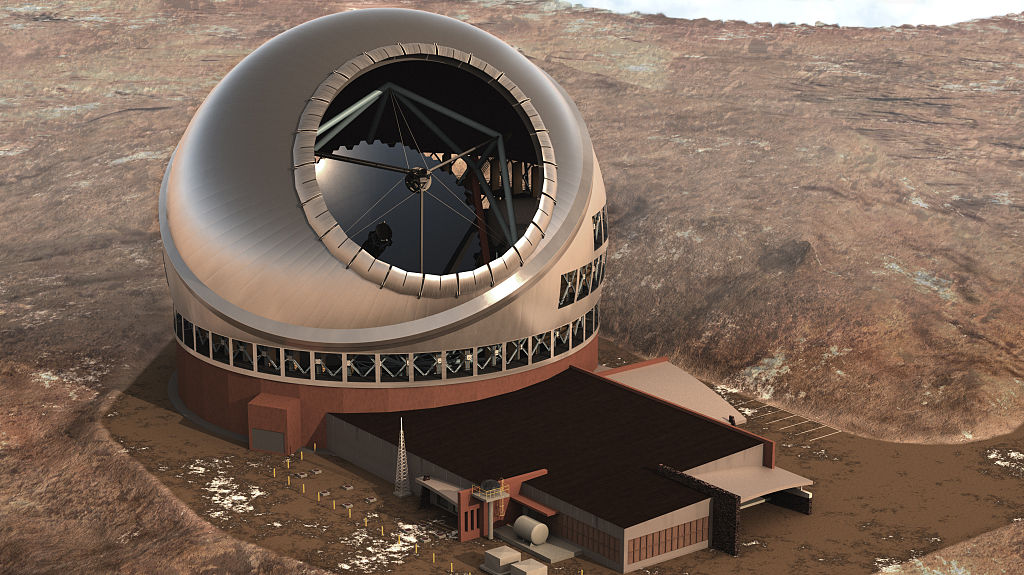 |
| Keck Telescope |
Webb Telescope |
30 Meter Telescope |
|
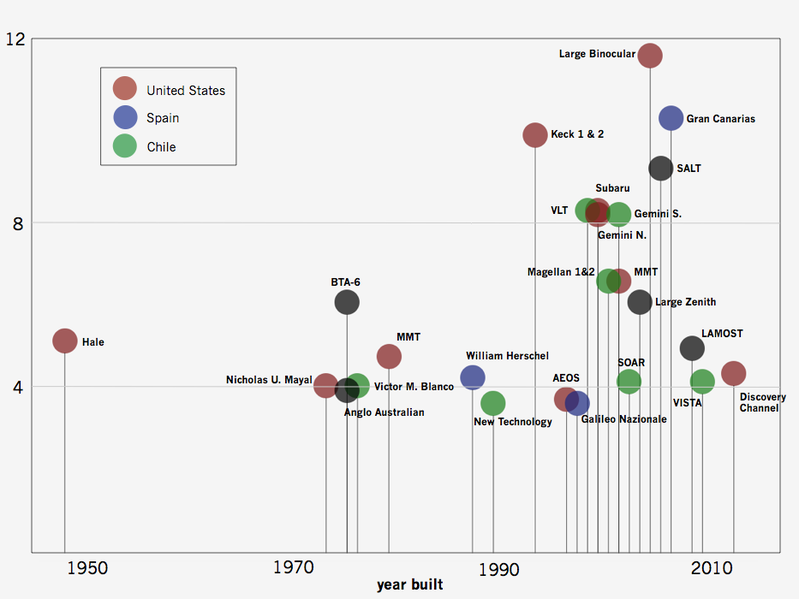 |
| Telescope size in meters |
Telescope Diameter Year Resolution
(meters) (arcsec)
Human eye .005 60
Lippershey's telescope ? 1608 First telescope. Refractor
Galileo's telescope .015 1609 Refractor
Galileo's telescope .038 1620 Refractor
Newton's telescope .033 1668 First reflecting telescope
Yerkes refractor 1.02 1897 Refractor. End of refractor age
Hale 60-inch 1.52 1908 .5 Mount Wilson observatory
Hooker 100-inch 2.54 1917 .5 Mount Wilson observatory
Hale 200-inch 5.08 1948 .5 Palomar Observatory
Keck 10 1993 .5 Mauna Kea Observatory
Keck + adaptive optics 10 2003 .05
30 Meter Telescope 30 ~2018 .015 Mauna Kea. Adaptive optics
Hubble 2.4 1990 .04 Earth orbit
Webb Space Telescope 6.5 ? .02 L2 Lagrange point
LSST 8.4 2021 El Penon, Chile. 15 second exposures
Hipparcos .29 1997 .001 Earth orbit. Specializes in parallaxes
Pan-STARRS 3.6 2010 Hawaii
Gaia 1.45 ~2014 .00002 L2 Lagrange point. Specializes in parallaxes
Orion .10 2013 1.0 $120 at Amazon.com
1 arcsecond = 4.85*10-6 radians
The diffraction limit to the resolution of a telescope in radians is
Resolution ~ 1.22 * (Wavelength of light) / (Mirror diameter)
For blue light with wavelength = 400 nm,
Resolution in arcseconds ~ .101 / Mirror diameter in meters
In this video, you can see the light from a star being distorted by atmospheric
turbulence.
https://www.youtube.com/watch?v=C4J52rgxjTs
Because of atmospheric distortion, Earth-based telescopes are limited in
resolution to ~ 1 arcseconds (the resolution of a 10 cm telescope).
Adaptive optics can correct for atmospheric distortion and improve the resolution to
~ .05 arcseconds.
For an object to twinkle, it has to have an angular diameter less than one arcsecond.
Venus, Mars, Jupiter, and Saturn don't twinkle because their angular diameters are
larger than this.
Hipparcos and Gaia specialize in measuring precise positions for parallaxes.
Pan-STARRS and LSST specialize in finding solar objects, which is why they use
short exposures.
Sensitivity
Astronomers measure brightness in a goofy unit called "magnitudes".
It was defined by Hipparcos in Ancient Greece and it's still with us.
The "Apparent luminosity" of a star is its brightness as viewed from the Earth.
The "Absolute luminosity" is the power generated by a star in Watts.
R = Distance to star
L = Luminosity in Watts
l = Flux in Watts/meter^2
M = Absolute magnitude
m = Apparent magnitude
Flux corresponds to the brightness of an object as viewed from the Earth.
l = L / (4 Pi R^2)
L = 3.29e28 * 10^(-M/2.5) Watts
l = 2.16e-8 * 10^(-m/2.5) Watts/meter^2
M = m + 87.71 - 2.17 log(R)
The fainter an object, the larger its apparent magnitude "m".
 |
|
Distance Luminosity Flux Absolute Apparent Discovery
from Watts Watts/m^2 magnitude magnitude
Earth (L) (l) (M) (m)
Sun 1 AU 3.8e26 1360 4.8 -26.7
Full Moon .00257 AU 4.8e15 2.6e-3 32.1 -12.7
Mars .52 AU 2.3e16 3.1e-7 30.4 -2.9
Jupiter 4.2 AU 1.5e18 3.1e-7 25.8 -2.9
Saturn 8.5 AU 6.8e17 3.4e-8 26.7 -.5
Uranus 18.2 AU 1.5e16 1.6e-10 30.9 5.3 1781
Ceres 1.77 AU 4.3e13 4.9e-11 37.2 6.6 1801
Neptune 29.1 AU 3.8e15 1.6e-11 32.3 7.8 1846
Pluto 28.7 AU 1.8e13 7.8e-14 38.2 13.6 1930
Alpha Centauri A 4.36 ly 5.9e26 2.7e-8 4.4 0.0
WISE-0855 7.2 ly 3.4e21 5.9e-14 17.5 13.9 Rogue planet
Sirius 8.58 ly 9.8e27 1.2e-7 1.4 -1.5 Brightest star
Betelgeuse 640 ly 5.8e31 1.3e-7 -6.0 .4 Massive star
Exo-Sun 10.0 ly 3.8e26 3.4e-9 4.8 2.0
Exo-Earth 10.0 ly 5.4e16 4.8e-19 29.5 26.6
Values for solar system objects are for when they are closest to the Earth.
Uranus is at the limit of human vision. It's conceivable that an ancient
civilization could have detected Uranus.
Ceres is just beyond human vision.
WISE-0855 is a brown dwarf with a mass somewhere between 3 and 10 Jupiter masses.
It has a temperature of 240 Kelvin and was detected by the WISE infrared space
telescope.
"Exo-Sun" and "Exo-Earth" are values for if the sun and the Earth are at a
distance of 10 light years.
GRB 080319B is the most luminous recorded gamma ray burst.
 |
|
The horizontal lines represent the limits of the Pan-STARRS, Keck, Hubble, and
Webb telescopes. Exo-Earth is detectable by the Keck telescope.
Limit of telescopes
Flux Apparent
limit magnitude
Watts/m^2 limit
Human eye 3.4e-11 7
Pan-STARRS 5e-18 24
Keck 10 meter 1e-19 28
Hubble 1e-20 31
Webb 5e-22 34
Atmospheric transmission
Observable from the ground?
Gamma ray No
X ray No
Ultraviolet No
Visible Yes
Infrared No
Millimeter Yes, if the air is dry
Radio Yes
Wavelength range of telescopes
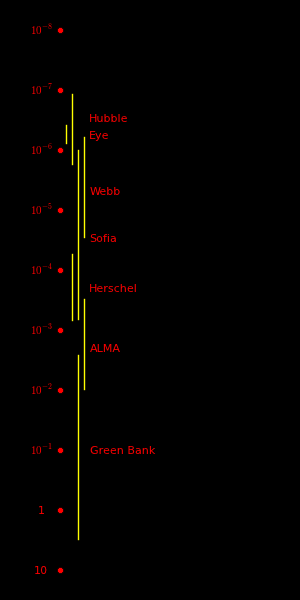 |
| Wavelength in meters |
The SOFIA tel escope can see in the infrared because it flies on a Boeing 747 at
an altutude of 12 km, which is above most of the atmosphere's water.
Radio telescopes
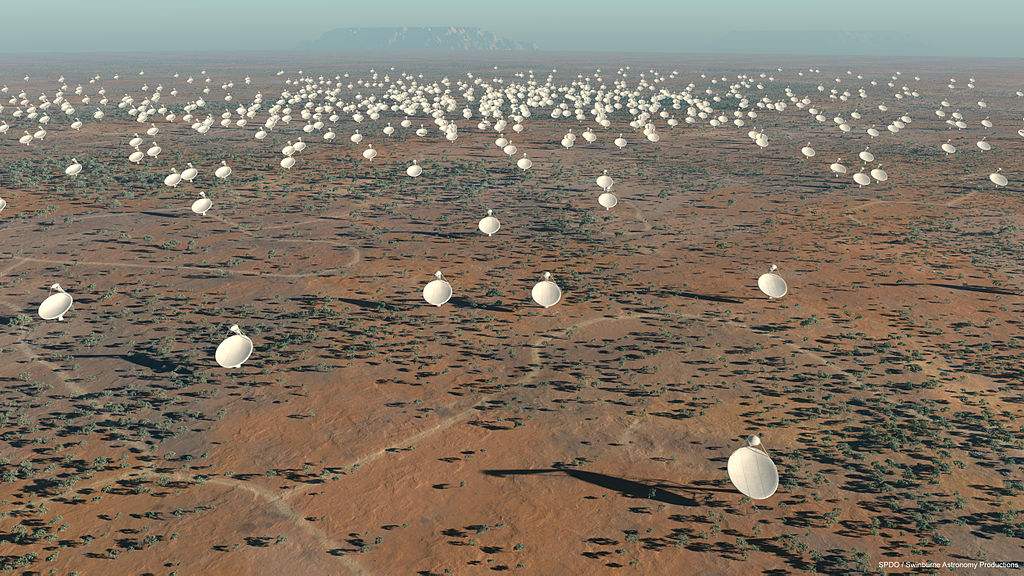 |
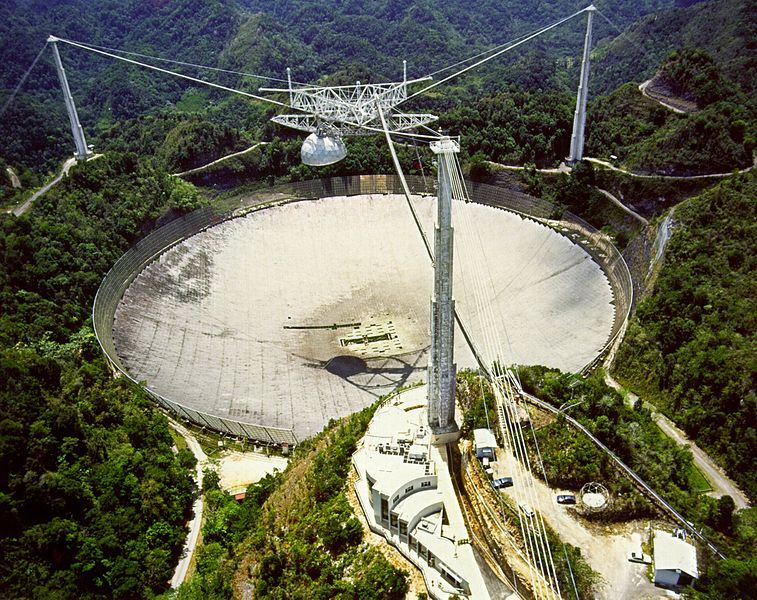 |
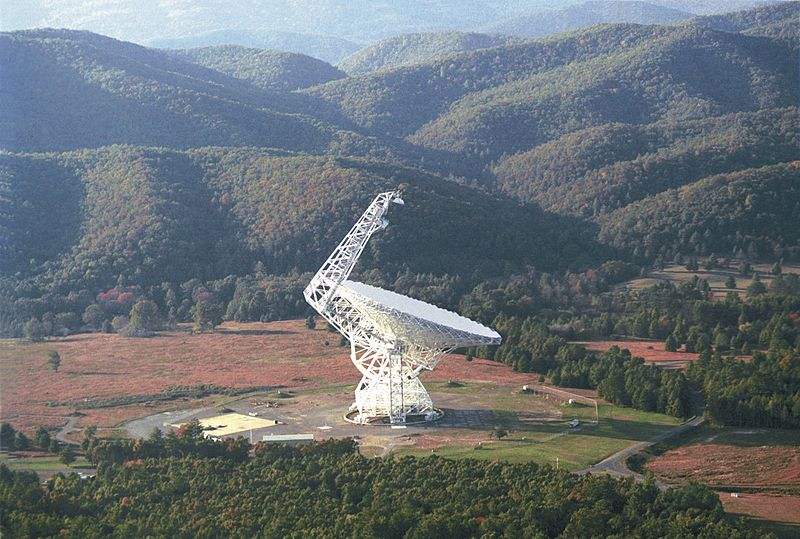 |
| Square Kilometer Array |
Arecibo |
Green Bank |
Min & Max
Aperture Year wavelength
(m) (meters)
Arecibo 300 1963 .03 1.0 Puerto Rico
Green Bank Telescope 100 2000 .0026 3.0 Green Bank, West Virginia. Largest steerable dish
Astron 10 2011 .01 1.0 High Earth orbit. Used for large-baseline interferometry
Square kilometer Array 1000 2019 .01 4.3 Australia and South Africa
Millimeter telescopes
Min & Max
Aperture Year wavelength
(meters) (mm)
CSO 10.5 1986 .3 2.0 Mauna Kea Caltech
Maxwell 15 1987 .3 2.0 Mauna Kea
ALMA 12 2011 .3 9.6 Atacama Desert, Chile 54 12-meter dishes and 12 7-meter dishes
LMT 50 2011 .85 4.0 Sierra Negra, Mexico Large millimeter Telescope
CCAT 25 2017 Cerro Chajnantor, Chile Wavelength range similar to ALMA
CSO = Caltech submillimeter observatory
CCAT = Cerro Chajnantor Atacama Telescope
ALMA = Atacama Large Millimeter Array
Infrared telescopes
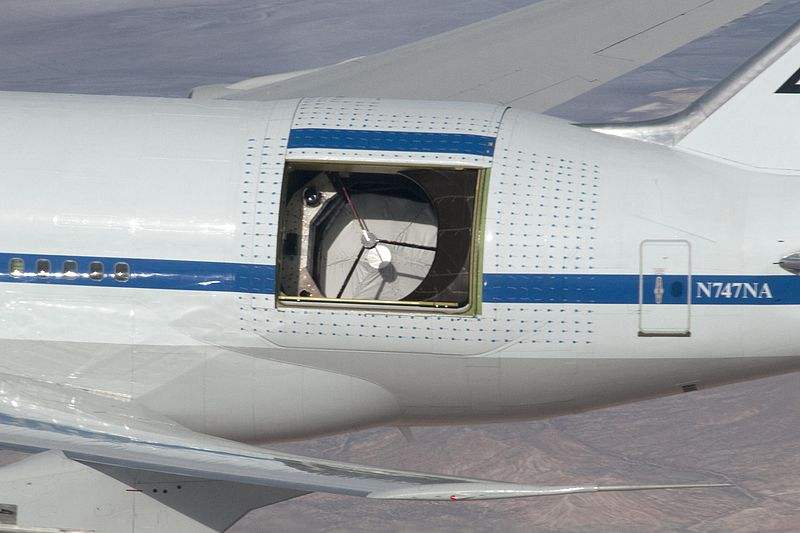 |
| The SOFIA telescope on board a Boeing 747 |
Min & Max
Aperture Year wavelength Location
(meters) (mm)
WMAP 1.6 2001 .003 .015 L2 Lagrange point NASA Observes cosmic microwave background
Spitzer .85 2003 .003 .180 Sun orbit NASA
WISE .40 2009 .003 .025 Earth orbit NASA
Herschel 3.5 2009 .055 .672 L2 ESA
SOFIA 2.5 2010 .001 .655 Boeing 747 at an altitude of 12 km
SOFIA = Stratospheric Observatory for Infrared Astronomy
X ray and Gamma ray telescopes
Aperture Year Range
Fermi 2008 30 MeV - 300 GeV L2 Lagrange point NASA
NuSTAR .32 2012 5 keV - 80 keV Earth orbit NASA 43 arcseconds resolution
Gravity wave telescopes
Year Range (Hertz)
LIGO 2002 300 - 7000 Washington
LISA ~2025 .00003 - 0.001 Sun orbit
Telescopes for finding solar system objects
Aperture Magnitude Field of Exposure Full-sky CCD Year
(meters) limit view (seconds) survey time (Gpixels)
(degrees) (days)
Pan-STARRS 3.6 24.0 3.0 60 8 1.4 2010 Hawaii
LSST 8.4 24.5 3.5 15 2 3.2 2021 El Penon, Chile
The Pan-STARRS and LSST telescopes are designed to find solar system objects, which is
why they use short exposures.
Limit of telescopes
Brightness Apparent
limit magnitude
Watts/m^2 limit
Human eye 3.4e-11 7
Keck 10 meter 1e-19 28
Hubble 1e-20 31
Webb 5e-22 34
Questions
How many arcseconds does Pluto move across the sky during a 10-hour observing session?
Suppose for an asteroid:
Distance from Earth = 0.1 AU
Speed transverse to Earth = 10 km/s
Albedo = 0.2
Brightness = 24 magnitudes
How long does it take to move 1 arcsecond across the sky?
If we that assume the brightness of an object in the solar system is proportional to
Radius^2 * Albedo / (Distance from sun)^2 / (Distance from Earth)^2
What radius does the asteroid have to have to have magnitude 24?
This sets the scale for the size of asteroids that Pan-STARRS can detect.
Suppose there exists a "Planet X" in the Kuiper belt with the following properties:
Distance from sun = 60 AU Beyond the "Kuiper cliff" at 50 AU
Albedo = .58 Same as Pluto
Radius = 6371 km Same as Earth
What is the brightness in magnitudes of this object?
Human vision
Limit of the human eye = Magnitude 7
Eye diameter = 5 mm
If you are looking at a magnitude 7 object, how many photons/second are you seeing?
Alpha Centauri system
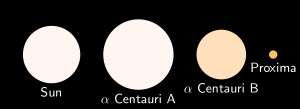 |
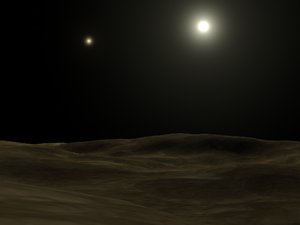 |
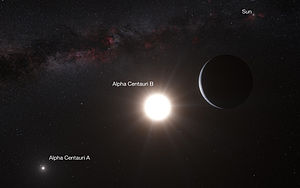 |
| Relative sizes |
Artist's conception |
Artist's conception |
Mass Luminosity Temp Distance Magnitude Age Metallicity
(K) (ly) (Gyr) (dex)
Sun 1.00 1.00 5778 0.0 -27 4.57 0.0
Alpha Centauri A 1.10 1.52 5790 4.36 0.0 6 1.5
Alpha Centauri B .91 .50 5260 4.36 1.3 6 1.6
Alpha Centauri C .123 .0017 3042 4.24 11.0 4.85 .2 (Proxima Centauri)
Distance between Alpha Centauri A & B = 17.57 AU (semimajor axis)
Orbit time for Alpha Centauri A & B = 79.9 years
Distance from Alpha Centauri C to Alpha Centauri A & B = .21 light years
Suppose a hypothetical "Planet Z" orbits Alpha Centauri B such that
Distance from Alpha Centauri B = 1.0 AU
Distance from sun = 290000 AU = 4.36 light years
Radius = 1.0 Earth radii
Albedo = .37 Same as Earth
What is the magnitude of Planet Z as viewed from the Earth?
Asteroids that have passed close to the Earth
Q = Radius of closest approach / Radius of Earth
Q Diameter Date
(meters)
Chelyabinsk 1.00 19 2013 2 15 .44 Megaton blast
Tunguska 1.0
1972 Fireball 1.0089 ~ 6 1972 Skimmed the upper atmosphere
2011-CQ1 1.87 1 2011 2 04
2008-TS26 1.96 1 2008 10 09
2011-MD 2.94 10 2011 6 27
2012-KT42 3.26 ~ 7 2004 5 29
2013-DA14 5.35 30 2013 2 15
2012-KP24 8.99 25 2004 5 28
2012-BX34 10.3 8 2012 1 27
2012-TC4 14.9 17 2012 10 12
2005-YU55 60.00 400 2005 11 8
http://en.wikipedia.org/wiki/List_of_asteroid_close_approaches_to_Earth
Planetary transits
Suppose an extraterrestrial civilization is using transits to detect the Earth.
Earth orbit speed = 29.8 km/s
Sun radius = 1.4e9 meters
Time for the Earth to transit the sun = 46600 seconds = 12.9 hours
Earth surface area / Sun surface area = .000084
This is the fractional intensity drop when the Earth transits the sun.
Problems
The Hipparcos and Gaia telescopes specialize in measuring precise star
positions for parallaxes. For a star that is 100 light years away, how
accurately can each of these telescopes measure their distance?
How about for a star in Andromeda?
Suppose an asteroid is a distance of 0.1 AU from the Earth in the direction
away from the sun (so that we're viewing it like a full moon).
Suppose also that it has an albedo of 1.
The smallest flux that Pan-STARRS can detect is 5e-18 Watts/meter^2.
What is the smallest value for the radius of this asteroid that the Pan-STARRS
telescope can detect?
Suppose an Earth-sized object is in the Kuiper belt and that it has an albedo of
1. What is the furthest distance from the sun that this object could be detected
by the Pan-STARRS telescope?









